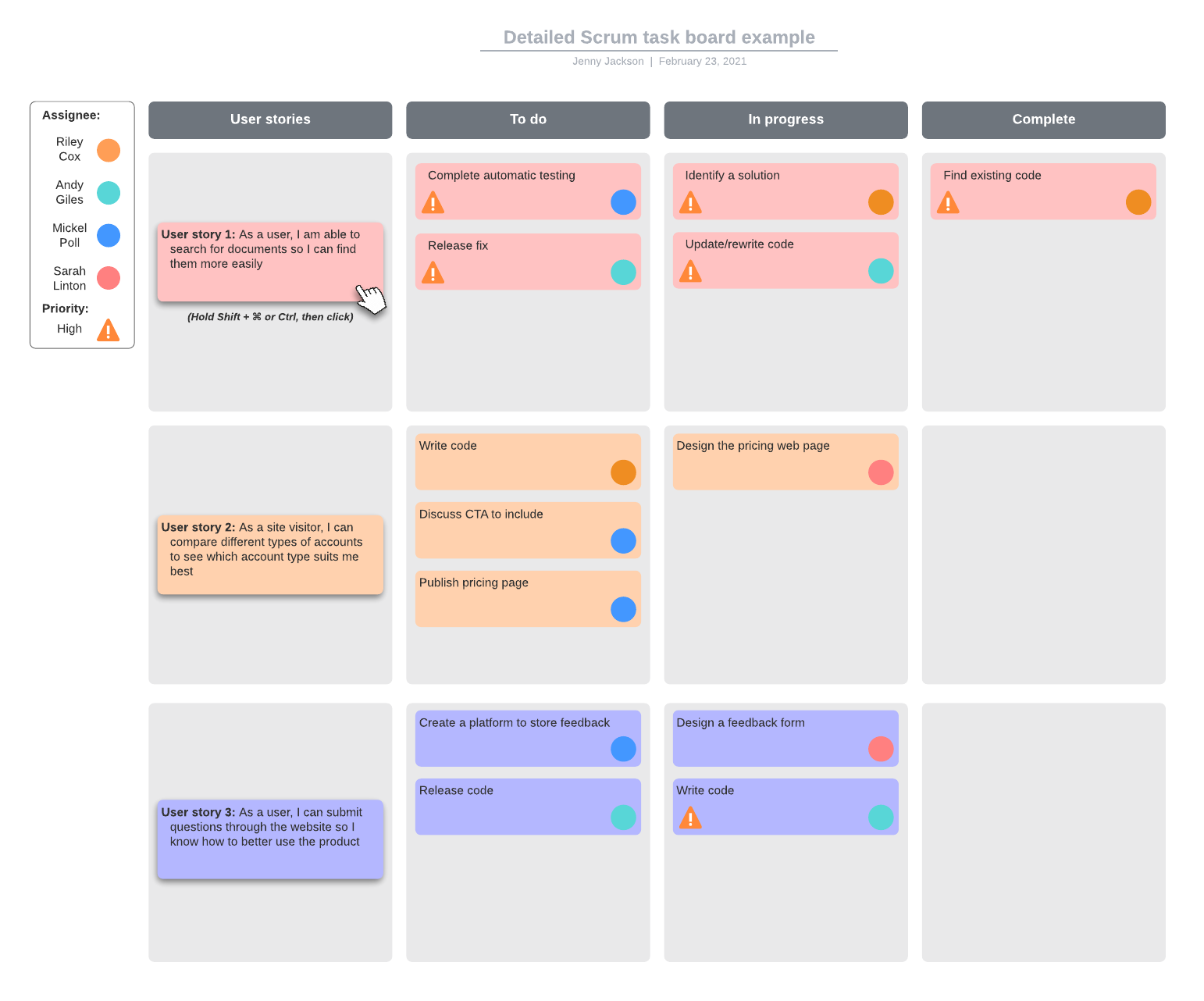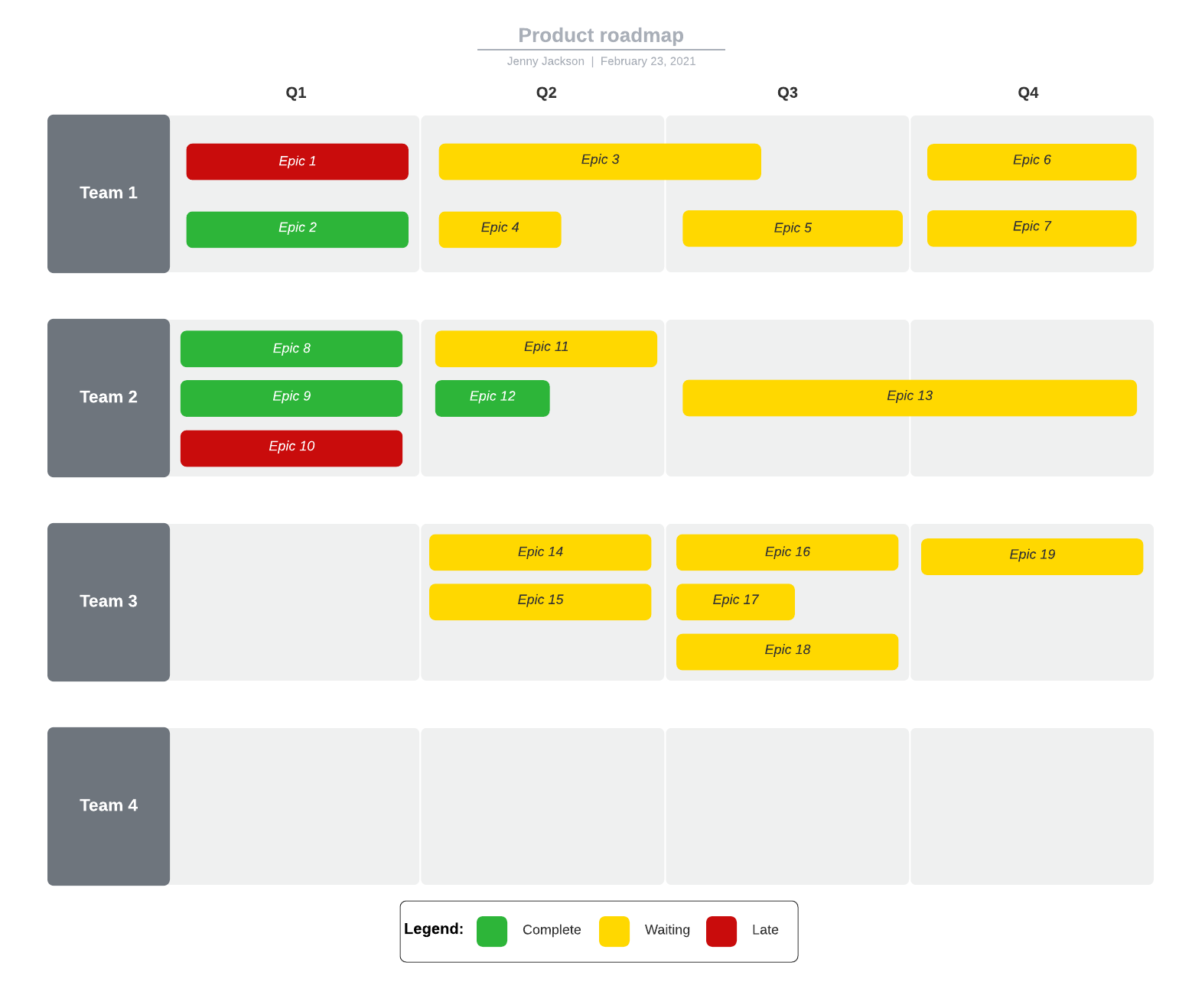
How to nail your Agile communication plan
Lucid Content
Reading time: about 7 min
The success of any project relies on strong communication channels. But as more and more teams transition to Agile project management, the way they communicate has to change too.
Traditional communication planning focuses on clearly outlined strategies and communication structures. It usually involves a detailed written communication plan and regular documentation and reports following a dedicated calendar.
However, this approach isn’t practical for Agile teams.
Agile development relies on simplicity, flexibility, and constant iteration. Because Agile teams learn as they go, it’s difficult to anticipate exactly where a project will be and what the communication needs will be on any given day. (And it makes traditional documentation-heavy communication plans cumbersome and counterproductive.)
So what do you do—throw out your plans all together? Not so fast.
Agile projects need a communication plan too. But the approach will look a little different.
Below we’ll cover what makes Agile communication plans different and what best practices you can follow for creating an Agile communication plan that works for your team.
What makes an Agile communication plan different
The Agile method follows a set of 12 principles (check out this post if you need a recap of the whole Agile Manifesto). Five of these principles relate to communication and can guide your strategy:
(4) Business people and developers must work together daily throughout the project.
Traditional project communication focuses more heavily on detailed documentation and a hierarchical framework for information-sharing. Traditional communication plans set expectations for when stakeholders will receive updates from developers and other team members and seek to streamline or eliminate the need for in-person meetings altogether.
Agile communication instead prioritizes closer collaboration and information sharing between stakeholders to ensure alignment and allow for quick decision-making and pivots throughout the process.
(6) The most efficient and effective method of conveying information to and within a development team is face-to-face conversation.
Agile communication puts less emphasis on detailed and complex documentation in favor of quick and dirty face-to-face conversations. This approach diverges heavily from traditional communication plans that focus on documentation and heavily structured meeting calendars.
But in the world of Agile, things move quickly and often unpredictably. That means you can’t always plan what conversation you’ll need to have. Instead, Agile communication requires high-level planning that facilitates clear information-sharing and productive face-to-face meetings.
(7) Working software is the primary measure of progress.
Traditional project management values documentation and status reports to measure and track progress. While Agile doesn’t completely throw out documentation, it places a much higher value on functional deliverables. In other words, Agile prefers to show over tell during regular sprint reviews.
(10) Simplicity—the art of maximizing the amount of work not done—is essential.
Communication plans should make it easier for developers and stakeholders to share information and move the project forward.
Agile communication is about reducing the steps required to get the information across. This includes a minimalist approach to documentation. Agile documents (i.e., artifacts) should be pared down to only the information that is necessary. This often means Agile artifacts convey project details at a glance.
(12) At regular intervals, the team reflects on how to become more effective, then tunes and adjusts its behavior accordingly.
An Agile approach doesn’t mean there isn’t any structure or schedule—the calendar is just more flexible and high-level than a traditional communication plan.
Agile is all about iteration, which requires regular check-ins between team members and stakeholders to report on progress and align on next steps.
Best practices for Agile communication
The principles above set the tone for an Agile communication plan. Here’s how you can put those principles into practice.
Streamline communication with Agile meetings
Traditional project communication plans outline a rigid and detailed structure of check-ins and status meetings. Agile meetings try to cut down on unnecessary emails and documentation with highly focused and efficient face-to-face meetings.
In fact, Agile includes set practices to communicate at each level, as shown below.
Streamline the communication process with Agile meetings including:
Sprint planning: At the beginning of a sprint, the team gets together to plan the sprint goal (or project objectives) for that stage based on the product backlog. This is an essential meeting because it determines the focus of the sprint, the requirements for deliverables, and the plan of action.
The length of the meeting depends on the length of the sprint. But a good rule of thumb is to multiply the length of the sprint (in weeks) by two. So a sprint planning meeting for a two-week sprint should take about four hours.
Daily Scrum meeting: This daily standup meeting is short and sweet. Each team member gives a brief status update on what they did the day before, what’s on the docket for that day, and what (if any) issues they’re facing. These meetings should last no longer than 15 minutes.
Sprint review: At the end of the sprint, it’s time to show everyone what you’ve completed. All stakeholders and Scrum team members gather to demo the software and highlight the tasks finished, identify any issues, and take feedback.
Retrospective: The retrospective occurs after a sprint review to go over the team’s performance during the sprint, including what went well, what didn’t work, and how to improve going forward. This is an important part of the Agile focus on continuous improvement and iteration. These meetings usually last a couple hours.
Show, don’t tell when it comes to progress updates
Agile development values work completed over written status updates. When communicating progress, focus on showing rather than telling. How?
Instead of sharing reports and project metrics like “percent complete” or a broad project timeline, demo the most recent working models of your project. What functionality exists now? Even if your prototype isn’t perfect or fully fleshed out, the current functionality is the best measure of your progress and the direction you need to go. This level of communication should happen during regular sprint demos and throughout each iterative stage.
Make work status visible
With Agile, change is the name of the game. Projects tend to move quickly and details change all the time. If you don’t have clear visibility into the current status of a project, you’ll miss key info and quickly fall behind—throwing a wrench in the smooth development of the project.
Make sure your communication plan includes strategies for organizing and sharing information clearly so the project status is always visible and on hand. Consider using Kanban boards, Scrum task boards, and product roadmaps to visualize the work and make it easy for team members to understand their roles, responsibilities, and work status at a glance.


Prioritize planning tools that are easy for the team to access, share, and edit on their own so the document always reflects the most up-to-date information. This will keep everyone on the same page through each iteration and stage of development.
Hold your team accountable
Traditionally, accountability for communication management falls to project managers. But Agile shifts the responsibility for basic communication and information sharing to the team members on the ground doing the work.
That’s because the people doing the work know the details of their work best. The goal of the team lead then is to facilitate productive meetings and remove obstacles so the team can collaborate and communicate efficiently. Make sure your team has the tools they need to share information effectively.
No matter what approach you take, communication will always be a crucial part of your project’s success. As you move towards Agile communication, remember that planning is often just as important as doing. Your communication will be stronger and more effective when it is built on clear plans and expectations from the beginning.

Once you’ve got your Agile communication plan ready to go the next step is to incorporate Lucidchart into your Agile strategy.
Learn howAbout Lucidchart
Lucidchart, a cloud-based intelligent diagramming application, is a core component of Lucid Software's Visual Collaboration Suite. This intuitive, cloud-based solution empowers teams to collaborate in real-time to build flowcharts, mockups, UML diagrams, customer journey maps, and more. Lucidchart propels teams forward to build the future faster. Lucid is proud to serve top businesses around the world, including customers such as Google, GE, and NBC Universal, and 99% of the Fortune 500. Lucid partners with industry leaders, including Google, Atlassian, and Microsoft. Since its founding, Lucid has received numerous awards for its products, business, and workplace culture. For more information, visit lucidchart.com.
Related articles
How to use the Agile RACI matrix for teams
In this article, we will learn about RACI matrices, their benefits and drawbacks, and how to create one for yourself.

